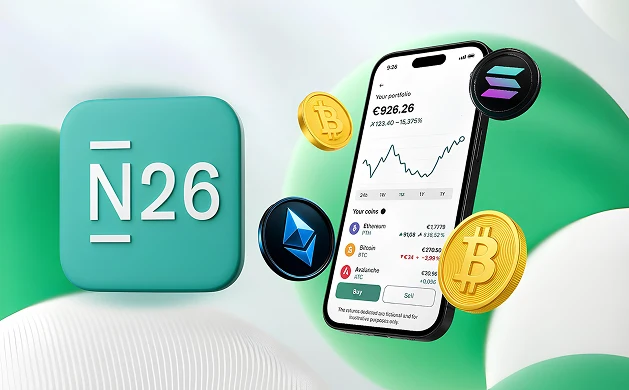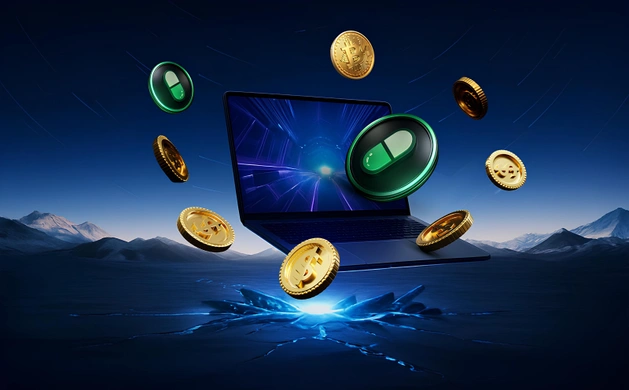What is Neon EVM?

Summary: Neon EVM is a smart contract infrastructure on Solana that enables the deployment of Ethereum protocols directly on Solana with minimal coding adjustments.
Neon's key components include Neon Proxy, NeonPass, Neon Operators, NEON token, and Neon DAO, which combined enable efficient operations, governance, and cross-chain functionality.
Developers should learn more about Neon because it offers easy deployment of Ethereum protocols on Solana, accessing the unique strengths of both networks.
Neon is a platform that allows Ethereum dApps and smart contracts to run on Solana's blockchain, utilizing parallelized transaction processing for enhanced speed and efficiency.
Key Features
Parallelized EVM built on Solana.
Smart Contract Languages
Solidity, Vyper and Rust.
Neon dApps
Moraswap, Sobal and zkUSD.
What is Neon EVM?
Neon EVM is an Ethereum Virtual Machine that runs on the Solana blockchain, providing a crossover between the two most popular Layer 1 networks. It gives Ethereum developers the power to deploy their decentralized applications (dApps) on Solana with minimal modification, preserving the original architecture while benefiting from Solana’s infrastructure for high performance.
With Neon EVM, builders can also enjoy Solana’s outstanding throughput of over 2,000 transactions per second, extremely low gas fees as low as 0.000015 SOL per transaction, and parallel execution capabilities (parallelization). The platform supports popular Ethereum tools like Solidity, MetaMask, Hardhat, and Remix, ensuring a familiar development experience.
The NEON token is the utility and governance token for Neon EVM, used for paying transaction fees and participating in protocol governance through the Neon DAO. Overall, Neon offers a unique opportunity to access Solana's liquidity, gain a first-mover advantage and reach new customers.

How Does Neon EVM Work?
Neon lets Ethereum protocols run on Solana while preserving compatibility with the Ethereum environment. It achieves this by converting Ethereum-like transactions into a format that can be processed efficiently by Solana's blockchain.
Here are the main components of the Neon virtual machine:
- Neon EVM Program: A smart contract on Solana that processes Ethereum-compatible transactions, using Solana's Berkeley Packet Filter (BPF) bytecode for efficient execution.
- Neon Proxy: Converts Ethereum transactions into Solana-compatible formats, allowing Ethereum dApps to interact directly with Solana with minimal changes.
- Neon Operators: These entities manage Neon Proxy servers, packaging and executing transactions on Solana. They receive compensation in NEON tokens for their service.
- Parallel Execution: The Sealevel parallelization model enables Neon EVM to run transactions in parallel, ensuring high throughput and improved scalability, making dApps more efficient.
- NeonPass: A utility that handles token transfers between Solana and Neon, enabling easy bridging of assets such as NEON and SPL tokens.
- NeonFaucet: Provides NEON test tokens for developers to use in testing and experimentation on the Neon DevNet.
- NeonDAO: The governance body responsible for managing the development and growth of the Neon ecosystem. NEON token holders participate in decision-making through proposals and voting.

Is Neon a Layer 2?
Neon is not a traditional Layer 2 network, even though many believe it to be since it is built on top of Solana. Instead, the founders describe Neon as a "network extension" or sometimes as an "L1.5" because it operates as its own virtual machine while interacting with Solana's SVM.
This can be best understood through a statement from Neon EVM's Chief Commercial Officer, Davide Menegaldo, who explained that, unlike an L2, Neon doesn't add an extra layer or batch transactions before settling.
How to Use Neon?
Neon EVM makes it easy for anyone to deploy and manage Ethereum protocols and applications on the Solana blockchain. Here is how to use it yourself:
- Set Up Your Wallets: Ensure you have both a Solana wallet (such as Phantom) and an EVM-compatible wallet (such as MetaMask) to interact with Neon.
- Access NeonPass: Use NeonPass to transfer tokens between the Solana and Neon networks, allowing you to bridge assets like NEON and SPL tokens.
- Deploy Contracts: Port and deploy your existing Ethereum contracts on Neon using tools like Remix, Hardhat, or Foundry. Note that minimal reconfiguration is needed.
- Pay Gas Fees: All gas fees are paid in NEON tokens. Make sure your Neon wallet is funded before executing transactions or deploying dApps.
- Monitor Transactions: Use NeonScan, Neon’s block explorer, to monitor transaction statuses, blocks, and account activities within the Neon applications.
- Participate in Governance: Use NEON tokens to engage in Neon DAO governance, where you can propose and vote on protocol updates and initiatives.

Neon Use Cases
There are over 40 native Neon EVM use cases, and the most popular ones are in DeFi and NFT projects. Projects like Vibrant Finance, which uses the DL-AMM model for liquidity control, and IceCreamSwap, a multi-chain DeFi protocol offering DEX, aggregation, bridging, and launchpad services, show how Neon EVM strengthens decentralized finance.
Neon EVM also powers decentralized lending platforms like Lumen and lendOS, which support borrowing and lending using Solana-based assets. NFT projects like Hodooi enable users to buy, sell, and re-sell NFTs across multiple chains, demonstrating Neon EVM's cross-chain capabilities.
NEON Tokenomics
The NEON token is an SPL utility token with two main functions: paying transaction fees for Neon EVM operations and providing governance power within the Neon DAO.
NEON has a fixed total supply of 1,000,000,000 tokens, the majority of which are locked under a vesting schedule to support long-term growth and stability. Here is the breakdown of the allocation:
- Public Sale: 5.00% for public sale, no lockup or vesting.
- Early Purchasers: 16.12% to early supporters, 1-year lockup, 1-year vesting.
- Early Contributors: 1.00% for early contributors, 1-year lockup, 1-year vesting.
- Advisors & Service Providers: 1.07% for advisors, 1-year lockup, 1-year vesting.
- Solana Capital Ventures International: 6.00% for consulting services, 4-year lockup, no vesting.
- Founders: 15.00% for founders, 1-year lockup, 1-year vesting.
- Ecosystem Development: 31.50% to incentivize development, 1-year lockup, 1-year vesting.
- Foundation Treasury & Ecosystem Growth: 24.31% for Foundation Treasury, managed by Neon DAO. 1.00% for Early Builders Program with 6-month vesting, rest has no lockup or vesting.
Additionally, NEON is non-inflationary and non-deflationary, with transaction fees split 50% to Solana Validators and 50% to the Neon DAO Treasury. It is a native token on both Solana and Neon EVM, similar to how ETH is used on Ethereum.

What is Neon EVM Points Program?
The Neon EVM Points Program, launched on August 14, 2024, rewards users for engaging with dApps in DeFi, gaming, and NFTs. Points are earned based on daily transaction count, transaction value, and interactions with multiple dApps. For the full list of eligible dApps, check here.
Users can connect up to 10 wallets to one account. Points are distributed based on transactions per day: 1-5 transactions earn 10 points, 6-10 earn 20, 11-20 earn 30, 21-40 earn 40, and 41 or more earn 50 points. Additionally, transaction values of $1-$10,000 earn 10 points, $10,001-$25,000 earn 20, $25,001-$50,000 earn 30, $50,001-$100,000 earn 40, and values over $100,000 earn 50 points.
Simple transfers do not earn points, and points are calculated using CoinGecko pricing, aggregated daily (UTC). Additionally, users can earn a 10% bonus for referring friends with no cap, and holding an NFT adds an extra 10% point boost. Engagement can be done using NeonPass and other tools.

Founders
Neon Labs was established in 2021 by Marina Guryeva, an experienced blockchain leader who has been in the industry since 2015. Marina has an engineering background and previously led blockchain projects like commun.com before starting Neon EVM.
Her vision for Neon was inspired by a conversation with Solana co-founder Anatoly Yakovenko, leading to the idea of creating an EVM on top of Solana. Neon went on devnet in 2022 and officially launched on Solana mainnet on July 17, 2023.
The project has raised a total of $45 million in funding, consisting of a $40 million seed round led by Jump Capital in November 2021 at a token price of $0.25, and a $5 million ICO on Coinlist in June 2023 at a token price of $0.10.
Bottom Line
While the Ethereum and Solana communities debate which blockchain is superior, the team behind Neon EVM has chosen a distinct approach that combines the strengths of both, by leveraging advancements like the Sealevel parallel execution model.
Even now in late 2024, Neon continues to innovate. Recent achievements include the release of a Solana-native whitepaper that adds Solana signature functionality and the implementation of dynamic priority fees, optimizing the user experience and enhancing transaction reliability.
%25201%2520(1).webp)
Written by
Emily Shin
Research Analyst
Emily is passionate about Web 3 and has dedicated her writing to exploring decentralized finance, NFTs, GameFi, and the broader crypto culture. She excels at breaking down the complexities of these cutting-edge technologies, providing readers with clear and insightful explanations of their transformative power.


%2520(1).webp)

.webp)
%20Philippines.webp)




